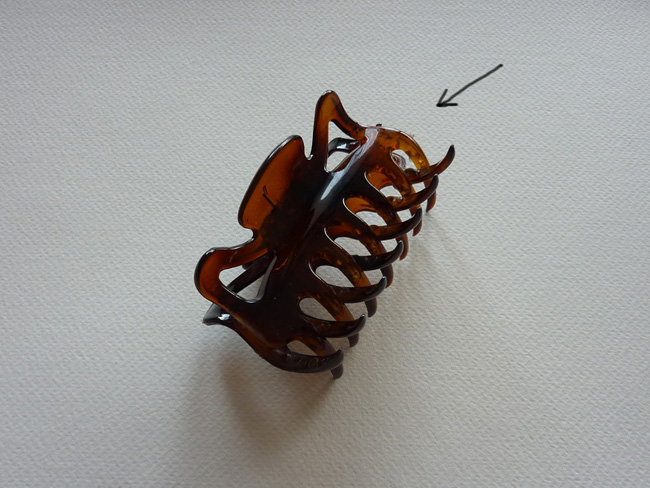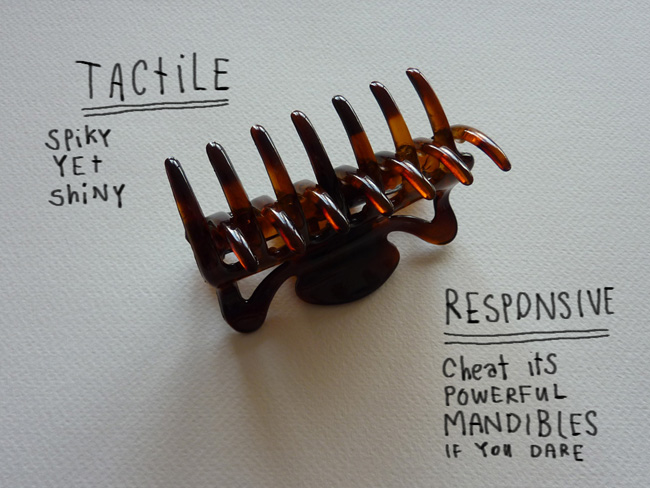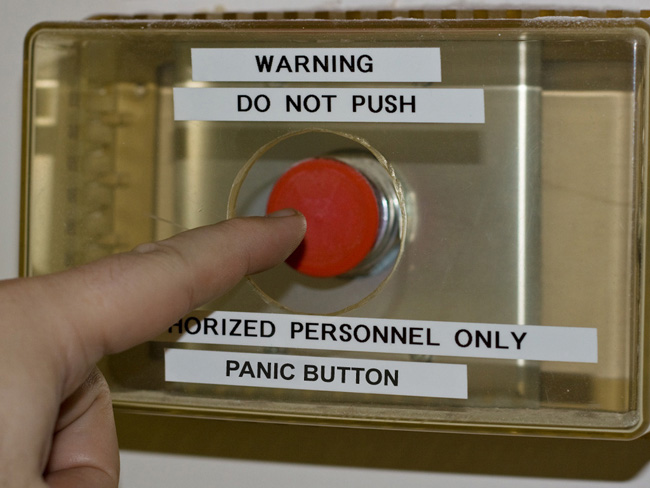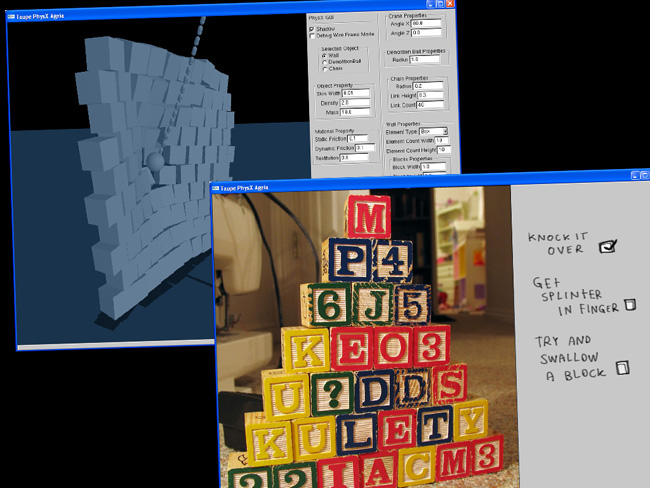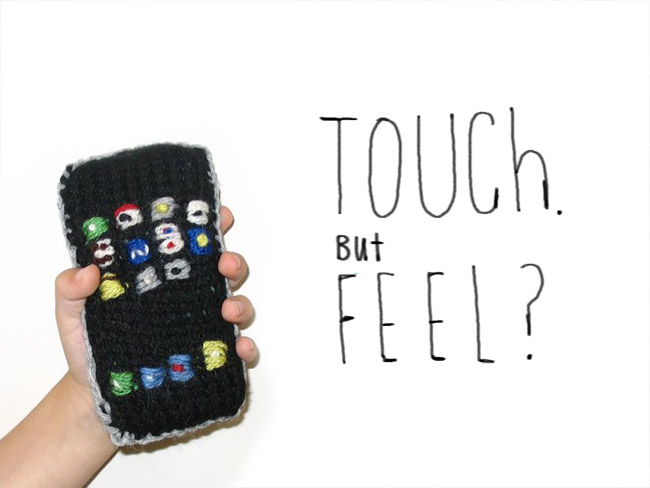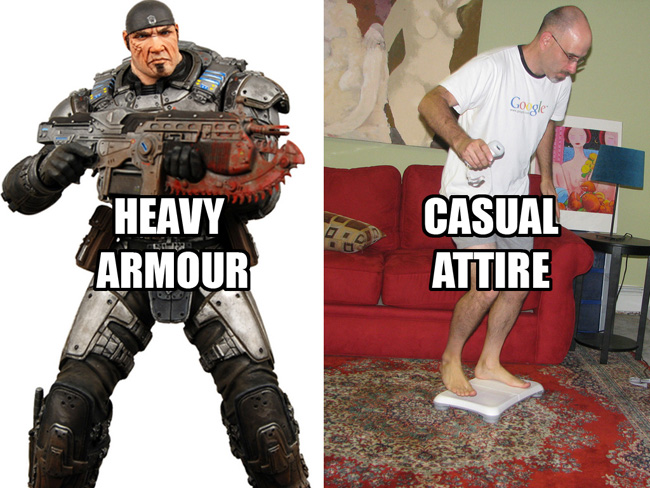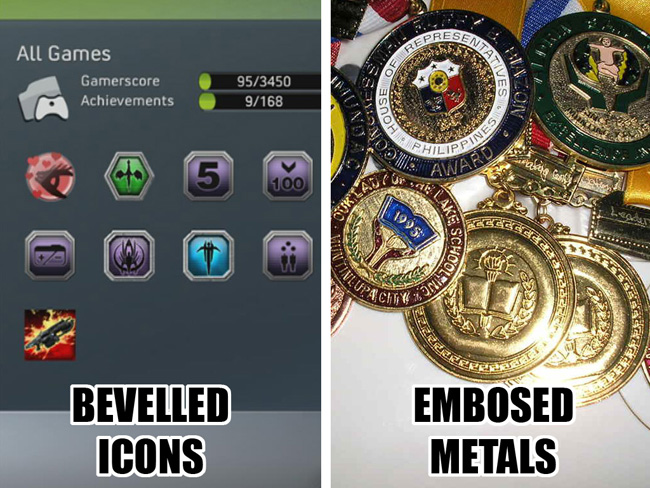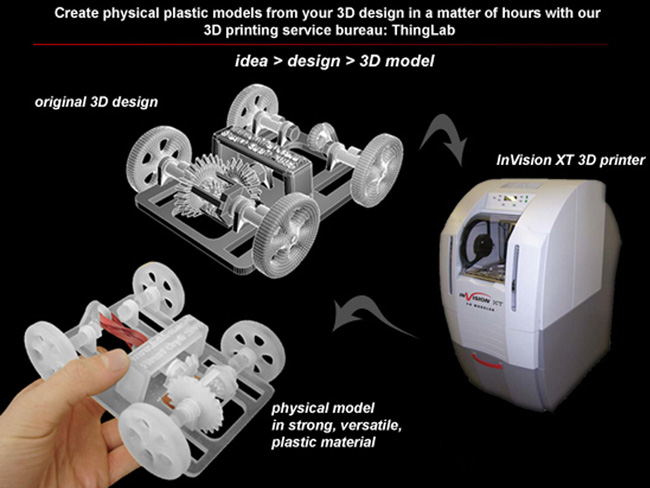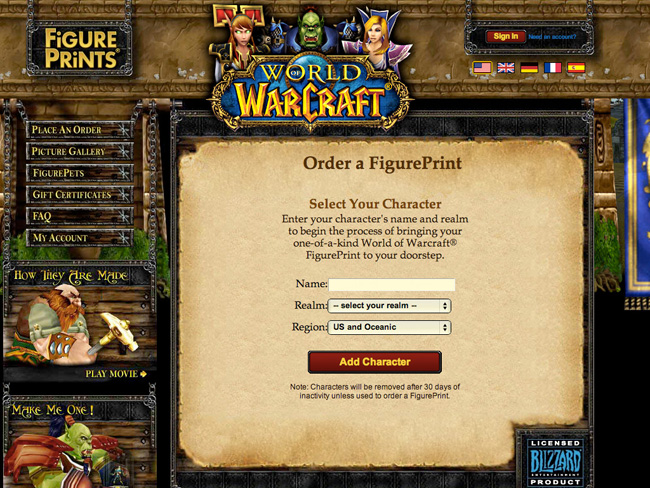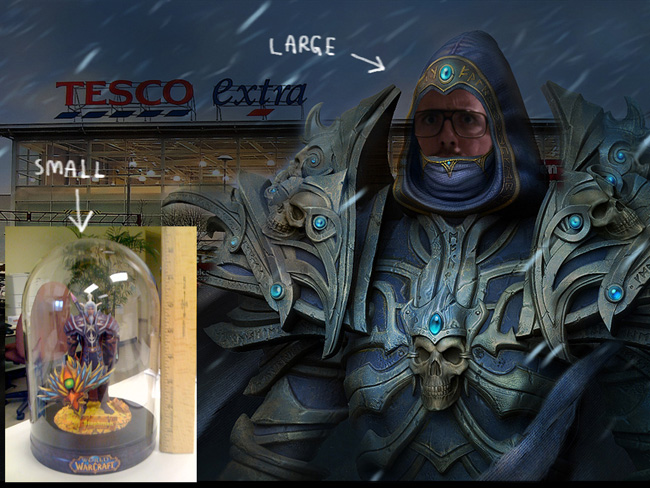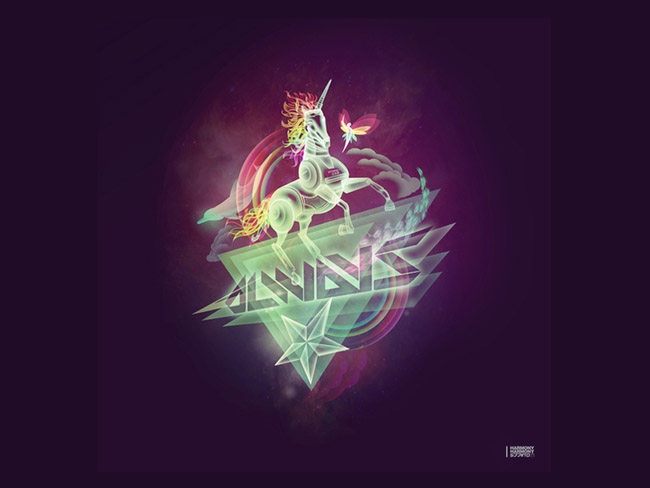Original Photo on Flickr
Kat Jungnickel, Post-doc Research Fellow, University of East London
Matt Jones, Director, Design at BERG
Jemima Kiss, New Media correspondent The Guardian.
..and me.
FiddleTech.
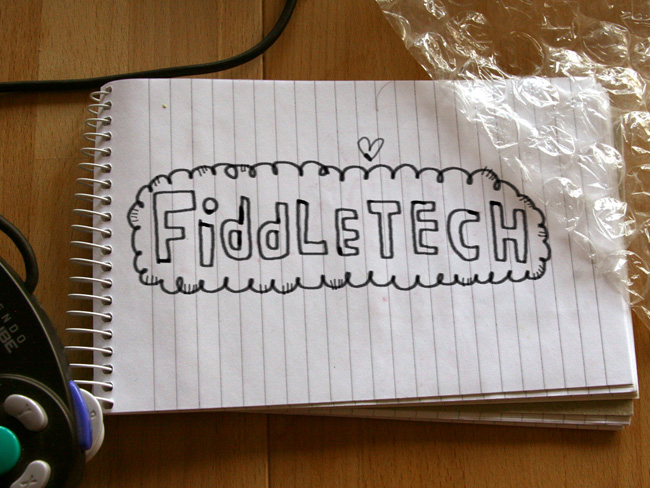
Hello I'm Rex. I do a lot of drawing, and lot of visual designing. Mainly for interactive mediums like videogames, for example the game LittleBigPlanet for Playstation3, a game all about making your own wonky creations and uploading them online for other players to play about with. It's a game that sums up my love of fiddling with stuff.
This love of playful stuff includes gadgets of all descriptions, bits of craft materials, pens, so many pens, musical instruments that make a vague sounds when you hit them, and probably most of all, videogame systems - mashing buttons and hammering d-pads, and I like pressing these buttons, they feel good to press.
They'd feel good even if they didn't make anything happen on the screen. And the closer that button can feel to the experience of popping bubble-wrap the better the button. That's a Gamecube controller there on the left, the greatest videogame controller ever designed, mainly because it had a really big button on it.
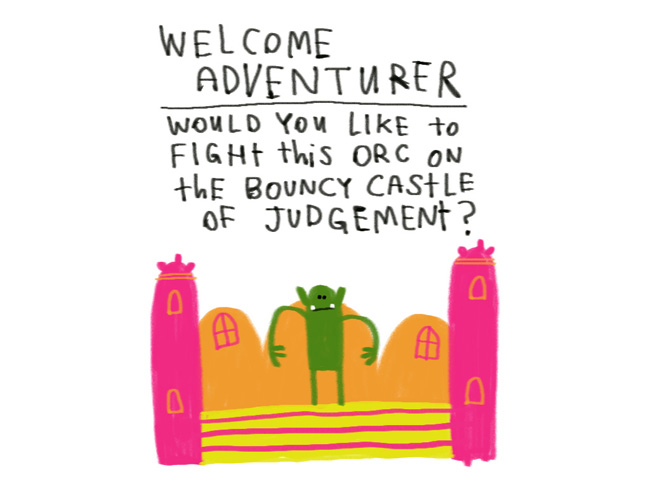
I'm also interested in using these button presses to create virtual experiences, but they have to be fun events that combine the experiences we have had and know, with things that are impossible and fantastical. This offer of fighting an Orc on a bouncy castle kinda sums that up.
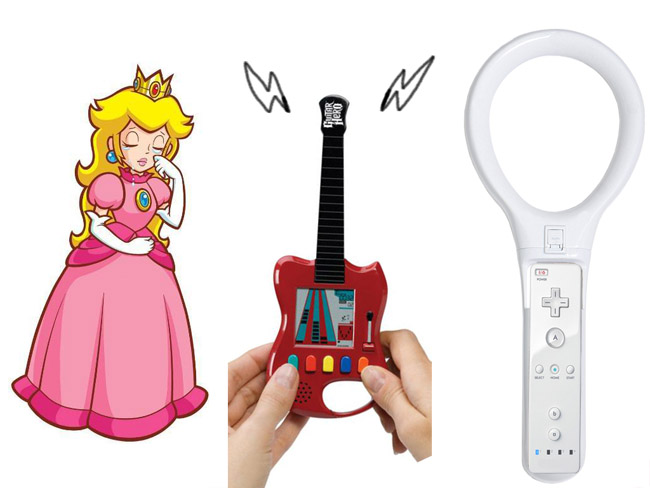
And yet my most inspirational gadget of recent times doesn't let me save galaxies, pretend to be in a rock band, or give me something to wave around during a game of virtual tennis. It's something I like to keep in an available pocket and entertain myself with at random points during the day.
It's this hair-holding gadget, yep it's not much more advanced than the wheel. And It's actual purpose is pretty useless to me, I guess if my hair was a bit longer I could wear it and try and look gangstar. But that's not my usual purpose for it. It reminds me of some of the other sensations that the digitising of everything is maybe losing.
And I like it because it shares many of my favourite qualities of playful gadgets and games. It's tactile and it's interesting to touch. It also responds. I squeeze it, it opens. It snaps back shut when I let go. There's a bit of tension in there. So I'll keep opening and closing it till the spring falls off.
And it also promotes a fantasy. It's a tiny Alien facehugger in my pocket. A little bitey monster with as much personality as I want to give it. And it's far better because it was never designed to look like how I'm seeing it. I have some time to myself it will periodically end up on my ear, nose, or broken on the floor. Or with me in my kitchen early this morning covered in ketchup (see above video).
The problem I have with lots of technology is that it's fragile and expensive so it's shut away inside protective cases or behind a screen. Which is a shame as tech likes being touched and is most interesting when you can hack it apart and mess with its innards.
So when looking to the future, I want technology I can poke & twist, break, and rebuild. For me LittleBigPlanet was an attempt to give people something to fiddle with on their Playstation. Dress-up as an astronaut and build a cardboard rocket to fly around in. Or make a rubberised rhino and shoot it out of cannon to see what happens when it hits a giant gong.
Many games employ these realistic physics engines. So that virtual crates can be stacked up and knocked over, just like our earliest play experiences. But we still can't get what we spent most of our childhood doing: gnawing on the blocks and getting splinters in our fingers.
Touch interfaces are fun and I'm as happy as anyone to tap,drag, tickle and stoke but despite all this excitable touching, the only thing I actually feel, is the shiny surface of the iPhone screen. I want to feel lumps and bumps, sharp edges and fur. I want devices that change shape and personality depending on how I'm interacting with them.
I'm still trying to find where I got this image from to credit it.
Gesture-based interfaces such as on the Wii, Playstation Move or Natal, also have lots of potential for arm waving hilarity, but ultimately we're all wallowing in thin air. It's hard to appreciate the simulation of being a mighty warrior when all you're wearing is a t-shirt and trackie-bottoms.
Games players currently achieve trophies for skilful play in games, but these are merely jpegs associated with a user account and can pile up infinitely. How about some real medals that look wonderful but also heavy and awkward to wear out to the pub to brag to your mates, giving bragging an annoying aspect for the bragger, not just the bragee.
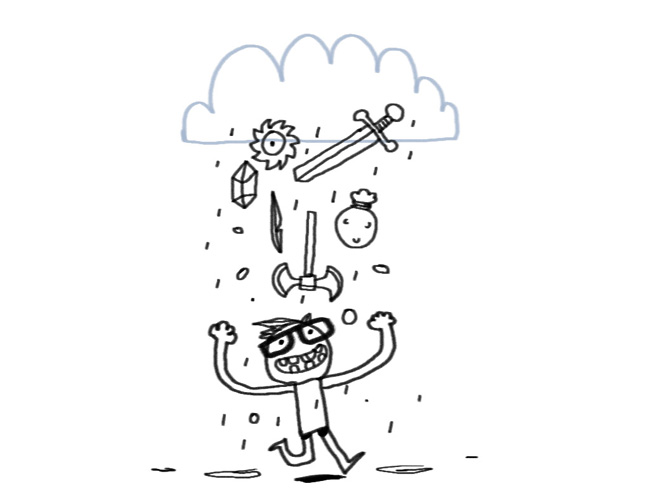
I'm hoping for a future where more of the digital data can escape from the hard-discs that holds it. Where the virtual can be transformed back into the physical and cloud computing rains its contents back down on us, as lumpy bits of our stuff. So we can feel it, remember it and share it.
At the moment this takes the form of rapid-prototyping machines, 3D printers. Give them the 3D data of a jewellery design, or the blueprints or your new improved He-Man figure you crowdsourced and it will carve it out of a block of resin or whatever material required.
Or you can log into Figureprints.com , enter the name of your avatar and have your World of Warcraft avatar built and painted and shipped to you. So you'll have perfect facsimile of your virtual self sitting on your desk guarding your paperclips.
The trouble is, it's only a few inches tall. I want the suits of armour from a game, and built to match my real-world size. I want to have the option to do things with it that it was never designed for, to wear it out to the shops, or while trying to ride a jetski. Anything that makes it more than an icon in an inventory.
Apologies to the great CG Artist who originally created the character render.
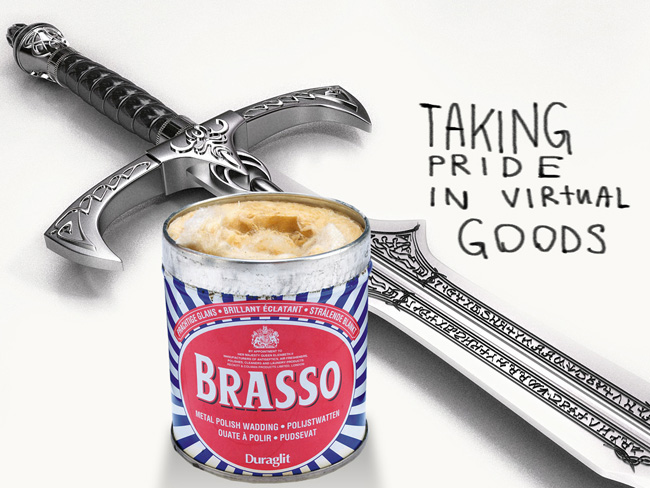
I don't want these objects because they would have any real value. I want it so I can feel the weight of them, notice the dents and imperfections, give them a bit of a polish, admire them. Feel like I have something that is more than just a statistic to help me win the game.
Epic Sword render by Stefanmarius
And then, just like desembling a lego creation when you're done with it, chuck the armour back into the matter-generator to be melted down into that robot unicorn I need for the commute home. Or to ride to the bar now. Join me!
Thanks for listening. Bye!
Amazing unicorn image by Quix Maiquez



